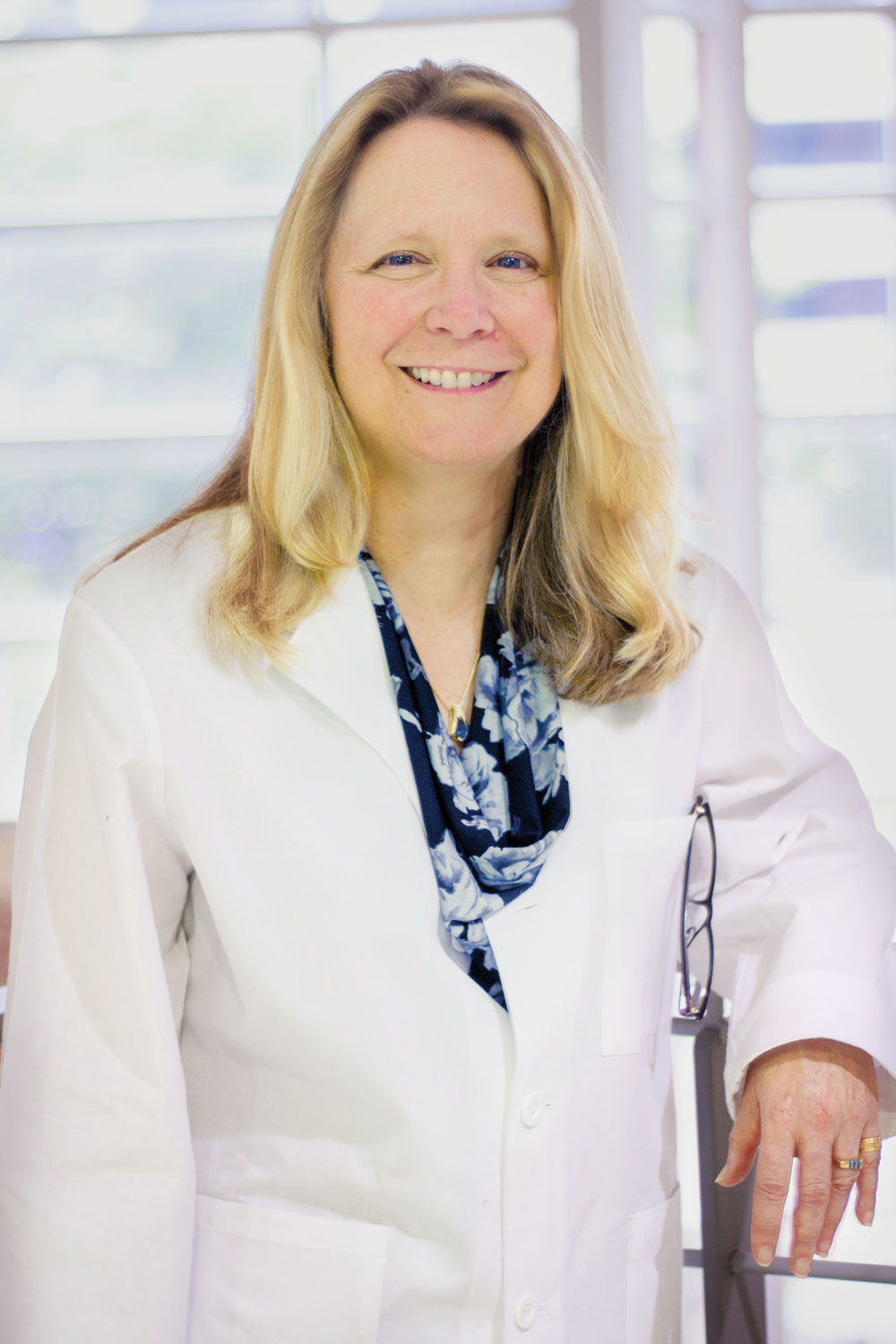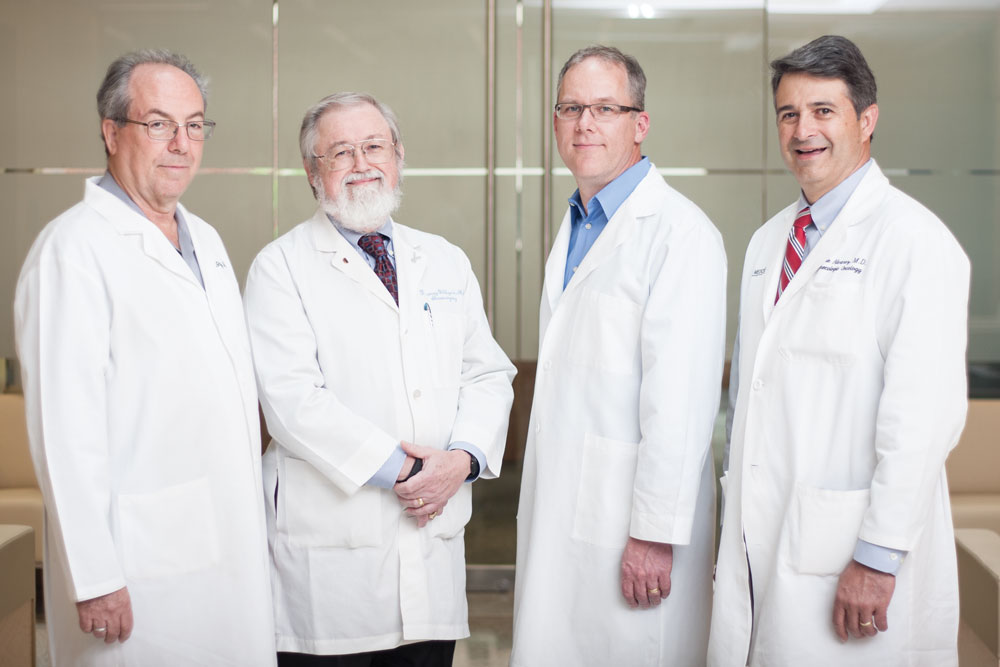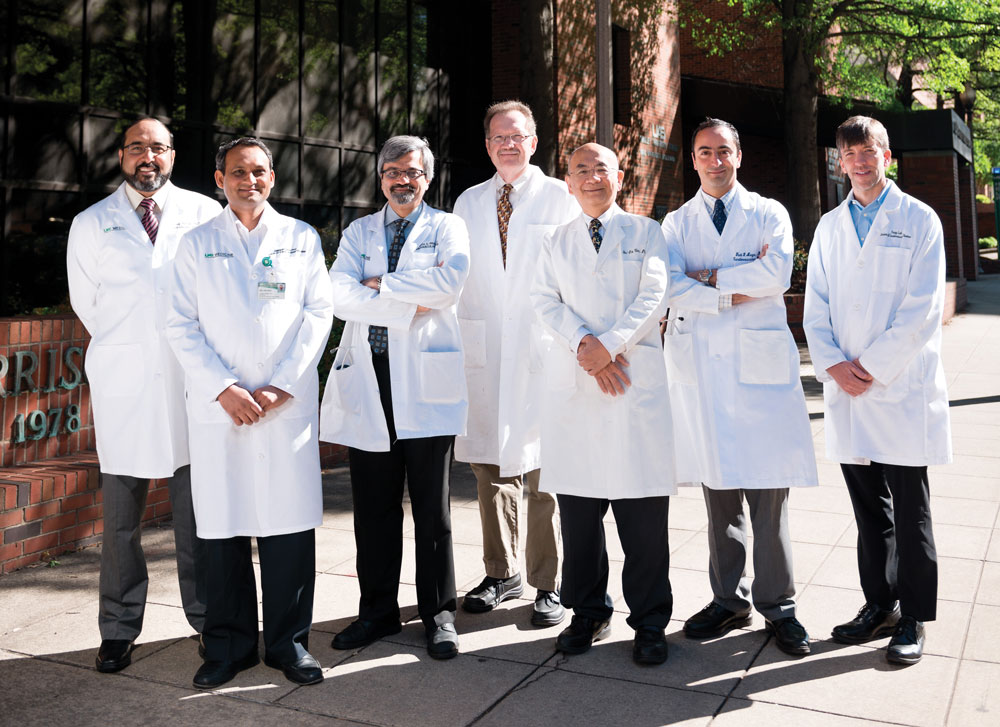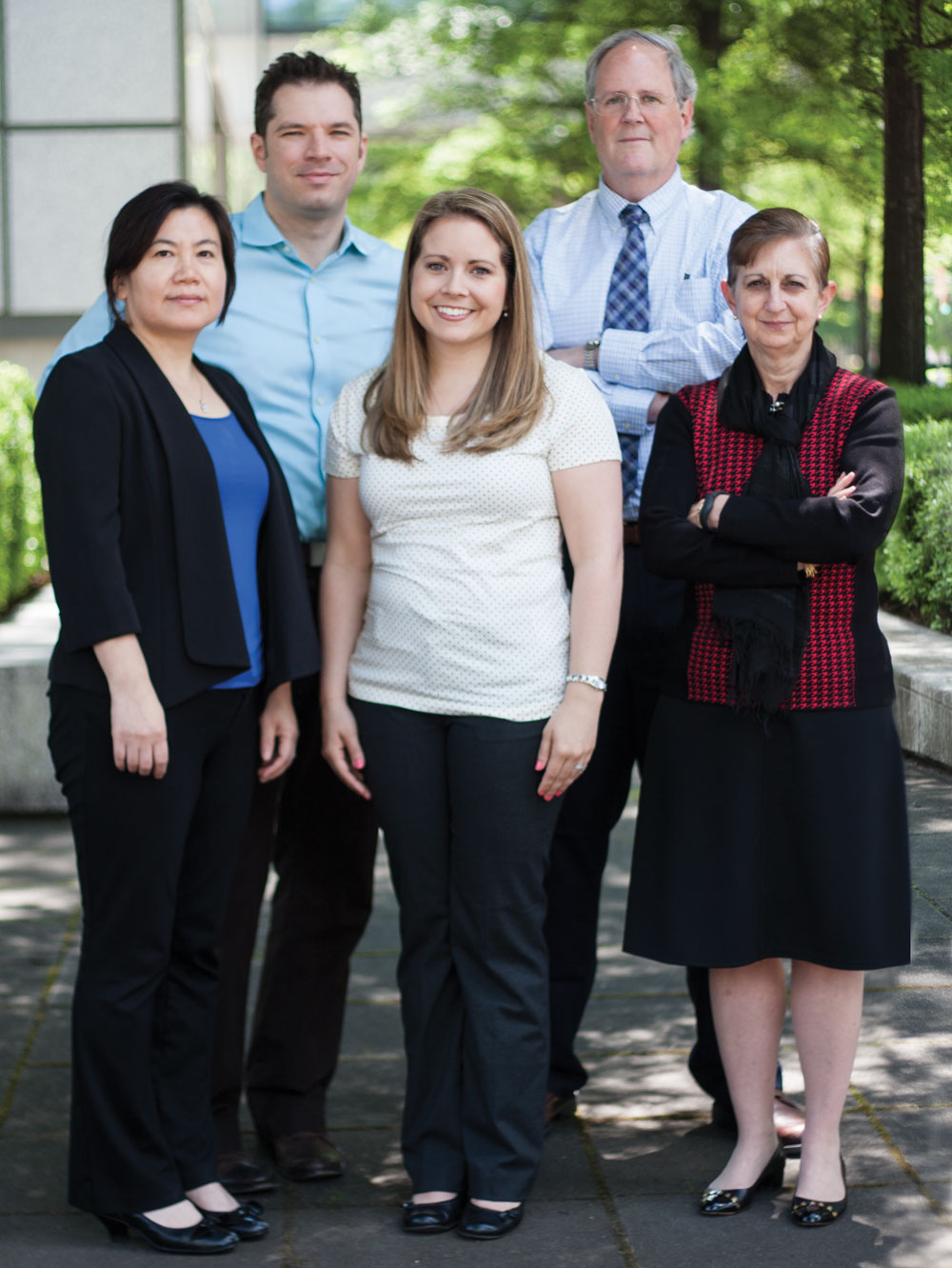But UAB has succeeded in raising its research profile nationally despite this unforgiving landscape. In 2014, NIH funding for the university rose more than 20 percent from the previous year. The School of Medicine’s NIH ranking rose to No. 26, up from No. 31 in 2013 and the first positive growth in 12 years.
Maintaining this upward trajectory means thinking strategically about how the School of Medicine will expand its research enterprise. For that reason, School of Medicine Dean Selwyn M. Vickers, M.D., FACS, in consultation with faculty and leadership, has identified five research focus areas that have a high translation opportunity for patient care and can build upon the school’s existing strengths.
One of the most cross-cutting of these focus areas is called “I-3,” which stands for inflammation, infection, and immunity. Why invest in I-3 research? The reason is simple: inflammation, infection, and immunity affect essentially every disease that is studied and treated at UAB, including diseases that are particularly common in Alabama and the South such as cardiovascular disease, obesity, and cancer. They encompass diseases that represent a significant portion of U.S. health care spending, are of major global concern, and are increasing in prevalence, such as Alzheimer’s and Parkinson’s disease, asthma, and autoimmune diseases.
Frances E. Lund, Ph.D., the Charles H. McCauley Chair of the Department of Microbiology, directs the working group that proposed I-3 as a focus area. “The I-3 research pillar is already quite strong,” she says. “It is represented by approximately 360 faculty who work in the realms of inflammation, infection, and immunity, and we have about 500 active awards, more than half of which are federal grants or contracts, that are specifically studying these processes.”
Engaging Immunity Against Cancer
 Frances Lund, director of the I-3 working group, advocates for a focus on inflammation, infection and immunity research.In the past, researchers tended to disregard the immune system when it came to developing cancer treatments. That attitude has changed dramatically in the past five years thanks to a mounting body of evidence indicating that it might be possible to leverage the power of the immune system to defeat cancer.
Frances Lund, director of the I-3 working group, advocates for a focus on inflammation, infection and immunity research.In the past, researchers tended to disregard the immune system when it came to developing cancer treatments. That attitude has changed dramatically in the past five years thanks to a mounting body of evidence indicating that it might be possible to leverage the power of the immune system to defeat cancer.Ronald D. Alvarez, M.D., the Ellen Gregg Shook Culverhouse Chair in Gynecologic Oncology, is working with researchers at Washington University in St. Louis to develop oncolytic viruses, which preferentially infect and kill cancer cells, that can infect ovarian and pancreatic tumor cells.
“You can try to trick the immune system into thinking your tumor is actually an infection,” says Troy D. Randall, Ph.D., the J. Claude Bennett Professor of Medicine in the Division of Clinical Immunology and Rheumatology. “So if the virus only infects the tumor cells, then the immune system will try to get rid of it by doing all the same things it would do if you had the flu. All these immune cells will come attack it.
“The trick is, how do we make sure the viruses exclusively infect the cancer cells? And once they do, how do we get the immune system to respond to that infection and help eliminate the tumor?”
Alvarez’s team is exploring a strategy that introduces a cancer antigen gene into dendritic cells using a cold virus with the hope that this will activate a specific subset of immune cells. “We are looking to see if that could be an effective vaccine strategy,” Alvarez says. “The dendritic cells present the cancer antigen to the T cells, which are then activated to go hunt down the cancer cells with this specific type of antigen on them.
“We have done gene-therapy studies using these cold viruses, and I have one long-term responder to this type of treatment who gives us hope that this may become an effective therapy one day.”
Another cancer immunotherapy research project, led by Donald J. Buchsbaum, Ph.D., director of the Division of Radiation Biology, and Andres Forero, M.D., the O’Neal-Sokol Breast Cancer Research Foundation of Alabama Endowed Professor, is exploring potential new treatment options for patients with triple-negative breast cancer.
 Finding ways to harness the power of the immune system to fight cancer is the goal of UAB researchers (left to right) Donald Buchsbaum, G. Yancey Gillespie, Troy Randall and Ronald Alvarez. These patients often become resistant to chemotherapy, making the disease much more difficult to treat. Approximately 15 to 20 percent of all breast cancer cases are triple-negative, and it tends to strike women under the age of 50. “That disease is begging for a new therapeutic approach,” Buchsbaum says.
Finding ways to harness the power of the immune system to fight cancer is the goal of UAB researchers (left to right) Donald Buchsbaum, G. Yancey Gillespie, Troy Randall and Ronald Alvarez. These patients often become resistant to chemotherapy, making the disease much more difficult to treat. Approximately 15 to 20 percent of all breast cancer cases are triple-negative, and it tends to strike women under the age of 50. “That disease is begging for a new therapeutic approach,” Buchsbaum says. Recent studies have shown that triple-negative patients who have high levels of immune proteins respond better to chemotherapy treatment than patients who have medium or low levels of immune involvement. “It turns out there are certain proteins that are designed to turn on CD4 T-cells, which are an important component of the immune system,” Randall says. “If these proteins get turned on, then the CD4 cells are activated to clear the tumor.”
Buchsbaum says a clinical trial at UAB found a correlation between the level of antigens that stimulate an immune response and the infiltration of white blood cells into the tumor. “Nobody had recognized that these antigens may well be stimulating the immune responses to cancer,” Buchsbaum says. “If that model works successfully, then we can develop combination treatments with other immunological approaches.”
Forero says such findings are impressive for an area of research that basically is still in its infancy. “Five or 10 years ago, none of us were experts in this field,” Forero says. “But we have learned a lot.”
Getting to the Heart of the Matter
Researchers increasingly are realizing, and attempting to capitalize on, the key role that inflammation plays in cardiovascular disease. Last year, Sumanth D. Prabhu, M.D., the Mary Gertrude Waters Chair of the Division of Cardiovascular Disease, used mouse models to demonstrate that immune cells from the spleen called splenocytes play a key role in the development of heart failure after a heart attack. Vividly, Prabhu and his colleagues found that when they transferred heart-failure splenocytes from heart-attack mice into healthy, non-heart-attack mice, the recipients developed cardiac dysfunction and enlarged hearts. Researchers, including Tariq Hamid, Ganesh Halade, Sumanth Prabu, C. Roger White, Yiu-Fai Chen, Fadi Hage and Martin Young, are exploring the myriad links between inflammation and cardiovascular disease. In a heart attack, the death of heart muscle cells first causes acute inflammation, the beneficial inflammatory response that removes dead cells and begins repair in the injured area. The real villain of cardiovascular disease appears later—unresolved chronic inflammation that lingers and is ungoverned, says Ganesh V. Halade, Ph.D., assistant professor in the Division of Cardiovascular Disease. This provokes a downward spiral in many cardiovascular conditions, including heart failure; atherosclerosis, or plaque build-up in the arteries; and peripheral artery disease, in which narrowed arteries reduce blood flow to the limbs.
Researchers, including Tariq Hamid, Ganesh Halade, Sumanth Prabu, C. Roger White, Yiu-Fai Chen, Fadi Hage and Martin Young, are exploring the myriad links between inflammation and cardiovascular disease. In a heart attack, the death of heart muscle cells first causes acute inflammation, the beneficial inflammatory response that removes dead cells and begins repair in the injured area. The real villain of cardiovascular disease appears later—unresolved chronic inflammation that lingers and is ungoverned, says Ganesh V. Halade, Ph.D., assistant professor in the Division of Cardiovascular Disease. This provokes a downward spiral in many cardiovascular conditions, including heart failure; atherosclerosis, or plaque build-up in the arteries; and peripheral artery disease, in which narrowed arteries reduce blood flow to the limbs. Understanding inflammation and its mechanisms could open paths to sorely needed novel treatments. Fadi G. Hage, M.D., associate professor of medicine in the Division of Cardiovascular Disease, is part of a multi-center study in the U.S. and Canada that will give low dose methotrexate, an anti-inflammatory drug, or placebo to 7,000 coronary artery disease patients with chronic inflammation from diabetes or metabolic syndrome. Physicians will then follow the patients for cardiovascular death, heart attack, or stroke. “This will directly test whether inhibiting inflammation has an effect on cardiovascular disease,” Hage says. “If successful, it will change the treatment paradigm for patients.”
Other interventions—still in the laboratory stage—may also signal big changes in cardiovascular treatment. Halade, Prabhu, and colleagues recently published a study of experimental-heart-attack mice that were given the lipid resolvin D1 a few hours after their infarctions. They found that resolvin D1 substantially reduced the amount of inflammation and heart failure compared to controls. “This study is the first to show resolvin’s effect on heart failure,” says Halade.
Resolvin D1 is naturally produced in the body as a metabolite of an omega-3 fatty acid that is especially present in fish oil. Omega-3-derived resolvins biomolecules have potent anti-inflammatory effects. Halade’s group found that resolvin D1 not only reduced the number of immune cells in the left ventricle, it also modulated the splenocytes that Prabhu tagged as culprits in heart failure. The UAB group is now using the mouse-model to test resolvin D1 on inflammation reduction in chronic heart failure.
Martin E. Young, D. Phil, associate professor in the Division of Cardiovascular Disease, explores yet another intersection of inflammation and cardiovascular disease—the role of circadian rhythms. Every cell in the body has a biological clock, and Young knows that disrupting the clock in monocyte immune cells leads to a pro-inflammatory state. He plans to use a mouse model to see if disrupted monocyte clocks lead to greater heart damage after a heart attack. Young, Prabhu, Halade, and colleagues already have preliminary evidence that disrupting the circadian clocks in heart muscle cells impairs inflammation resolution and triggers diastolic dysfunction, a heart condition in which one part of the two-part pumping phase is abnormal.
“People disrupt their circadian rhythms all the time—nurses, shift workers, the police force, security,” Young says. Furthermore, he notes that a hospital’s ICU disrupts patients’ circadian clocks with constant lights, noise, and activity. “The clinical significance is huge.”
Inflammation on the Brain
 Probing the causal relationship between Parkinson's disease and inflammation is the focus of (clockwise from top left) Andrew West, David Standaert, Etty Benveniste, Ashley Harms and Hongwei Qin.The idea that there is a connection between inflammation in the brain and Parkinson’s disease is nothing new. It was noticed in postmortem cases involving Parkinson’s patients as far back as the 1980s. What has changed is the notion that instead of inflammation being merely a consequence of the disease, it might actually be a driver of it.
Probing the causal relationship between Parkinson's disease and inflammation is the focus of (clockwise from top left) Andrew West, David Standaert, Etty Benveniste, Ashley Harms and Hongwei Qin.The idea that there is a connection between inflammation in the brain and Parkinson’s disease is nothing new. It was noticed in postmortem cases involving Parkinson’s patients as far back as the 1980s. What has changed is the notion that instead of inflammation being merely a consequence of the disease, it might actually be a driver of it.“Twenty years ago, the view was that, because a patient had a neurodegenerative disease and part of the brain was dying off, as a result you had inflammation in the brain,” says David G. Standaert, M.D., Ph.D, the John N. Whitaker Endowed Chair of the Department of Neurology. “It was viewed as not having that much importance in causing the disease. That thinking has changed a lot recently; now we’re wondering if inflammation actually drives the process forward.”
Standaert says one of the key reasons for this shift was the discovery of a connection between Parkinson’s and a gene called HLA-DR2, which he describes as being part of the master gene that regulates immune responses. The key discovery was made by Haydeh Payami, Ph.D., who recently joined UAB as a professor and the John T. and Juanelle D. Strain Endowed Chair in Neurology. “HLA-DR2 was known to be linked to all kinds of other immune diseases,” Standaert says. “Now we know that there is a genetic link between variations in this critical immune regulatory gene and Parkinson’s.”
For the next two years, researchers at UAB will explore this potential link in a project entitled, “Innate and Adaptive Immunity in Parkinson’s Disease,” which is being funded through an NIH grant. The objective is to gather enough collaborative data so UAB can compete for a Udall Award, establishing a multi-investigator, multi-project Parkinson’s disease research center at the university that will also be NIH funded. There currently are only nine such Udall Centers in the nation.
“The project is designed to study immune cells that normally reside in the peripheral blood, and try to discover how they get into the brain and what they are doing there,” says Ashley S. Harms, Ph.D., the Frances and Beverly Dubose Fellow and an instructor in the Department of Neurology, who is coordinating the study.
“We want to identify different pathways for how these cells are activated and get into the brain, and potentially open up an avenue for a therapeutic. Because as of now, there are no therapeutics that slow or treat Parkinson’s.”
There are three separate components to the project. One is being led by Andrew B. West, Ph.D., the John A. and Ruth R. Jurenko Endowed Professor in the Department of Neurology. West is examining the interaction of inflammation and the LRRK2 gene, which has also been linked to Parkinson’s.
“Whenever there is a problem, there seems to be inflammation,” West says. “The genetics of the disease have been telling us that we were overlooking an important component. We’re now focusing on that aspect.
“If you tackle the root source that results in this chronic inflammation, we think we’ll have a more exact way to extract the benefit. It’s like the difference between using a scalpel and a battle ax. There are still questions to be asked, but the potential benefit is very high.”
Another part of the project is being led by Etty “Tika” Benveniste, Ph.D., the Charlene A. Jones Endowed Chair in Neuroimmunology. She, in conjunction with Associate Professor Hongwei Qin, Ph.D., is looking into the possibility of whether the JAK/STAT signaling pathway, which already has been identified as having a link to multiple sclerosis and other diseases, can also be employed as a therapeutic strategy for the treatment of Parkinson’s.
“The exciting thing about that is there are already drugs and medications in the pipeline that can affect the JAK/STAT pathway,” Standaert says. “So Dr. Benveniste and Dr. Qin are asking whether these drugs can also be used for Parkinson’s.”
The third component is a human study that will be led by Standaert. Researchers will examine patients who are in the very earliest stages of Parkinson’s and isolate the inflammatory cells from their blood to see if they can find evidence of activation of their inflammatory system.
“The big question is, would an anti-inflammatory treatment be beneficial for patients with Parkinson’s, and if so, what kind,” Standaert says. “There actually is some evidence that simple things such as ibuprofen have been shown to reduce the risk of Parkinson’s. We need to understand more about the details of this inflammation to get a better sense of where to attack it.
“This is a classic UAB story,” he continues. “It’s a collaborative project that reaches across a large space. You’re talking about linking up the Departments of Neurology and Cell, Developmental, and Integrative Biology, and then all the patient recruitment through the Kirklin Clinic. We’ve been able to bring those three parts together in this one study.”
—written by Cary Estes and Jeff Hansen